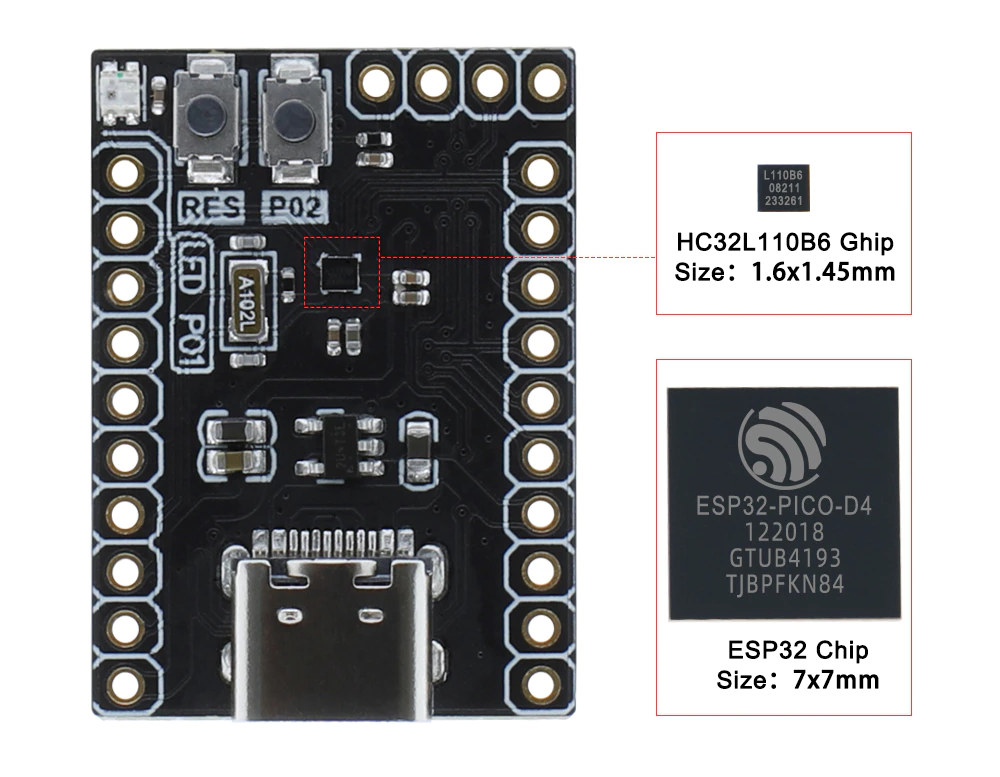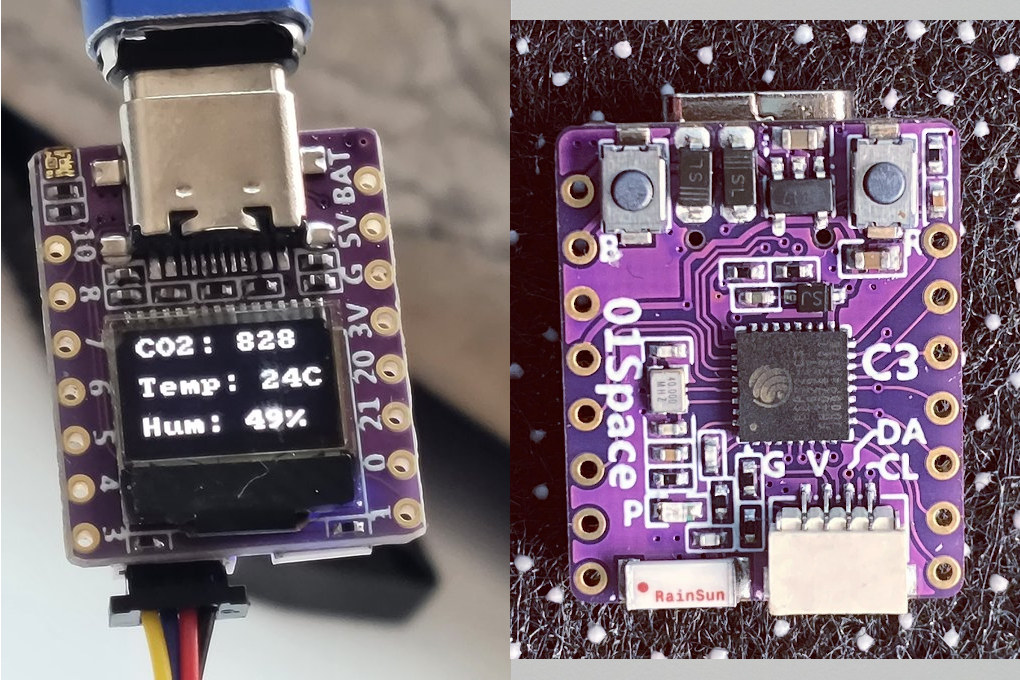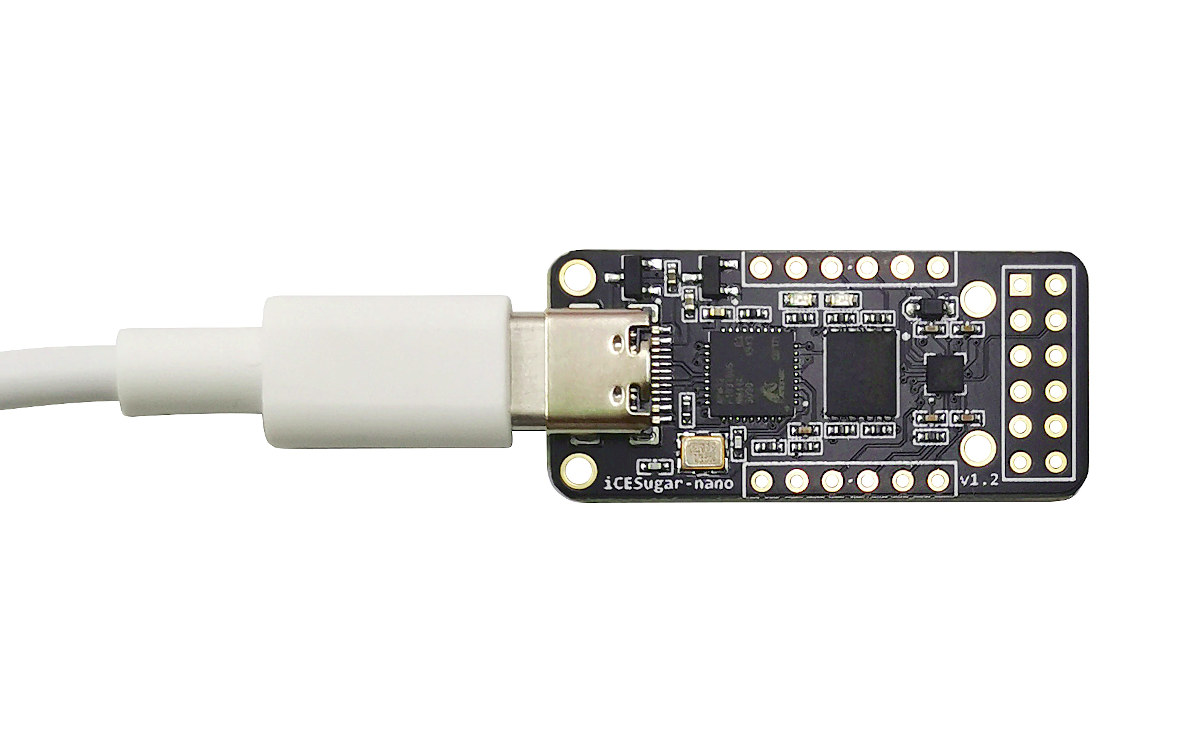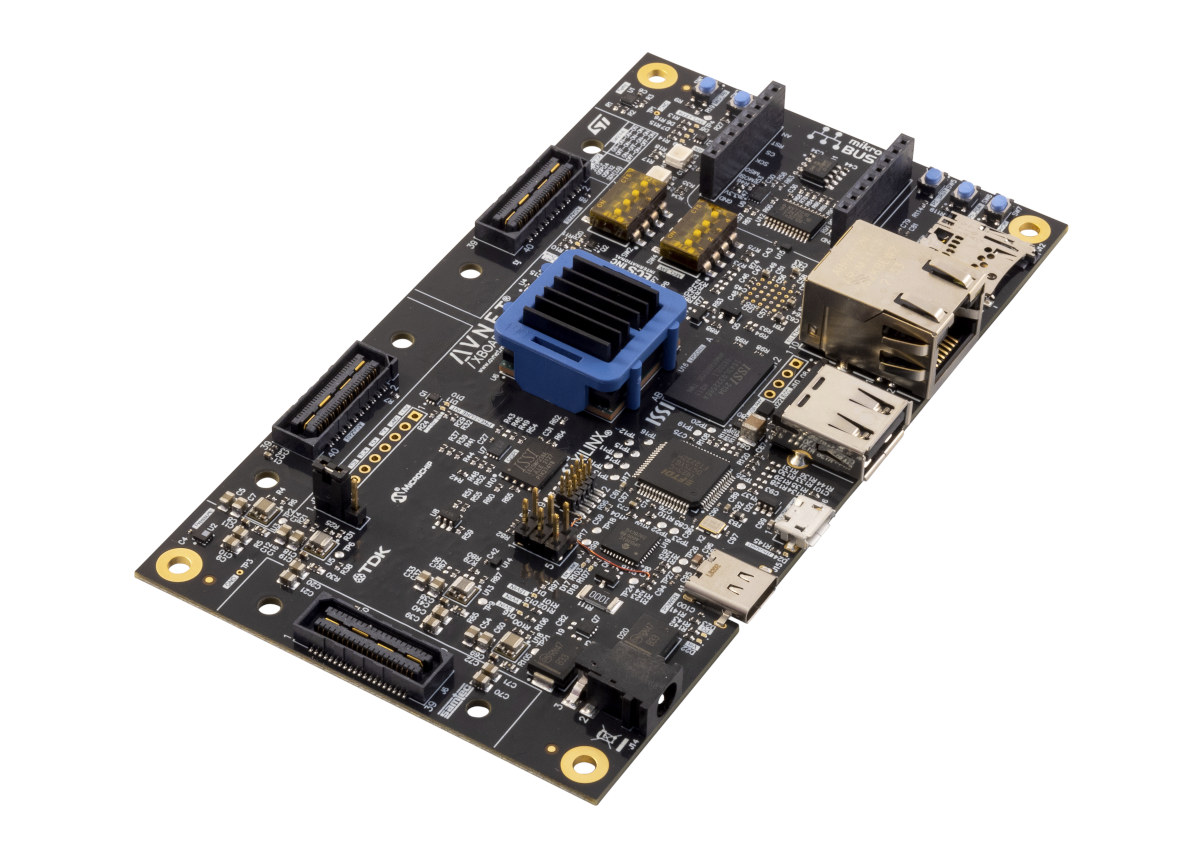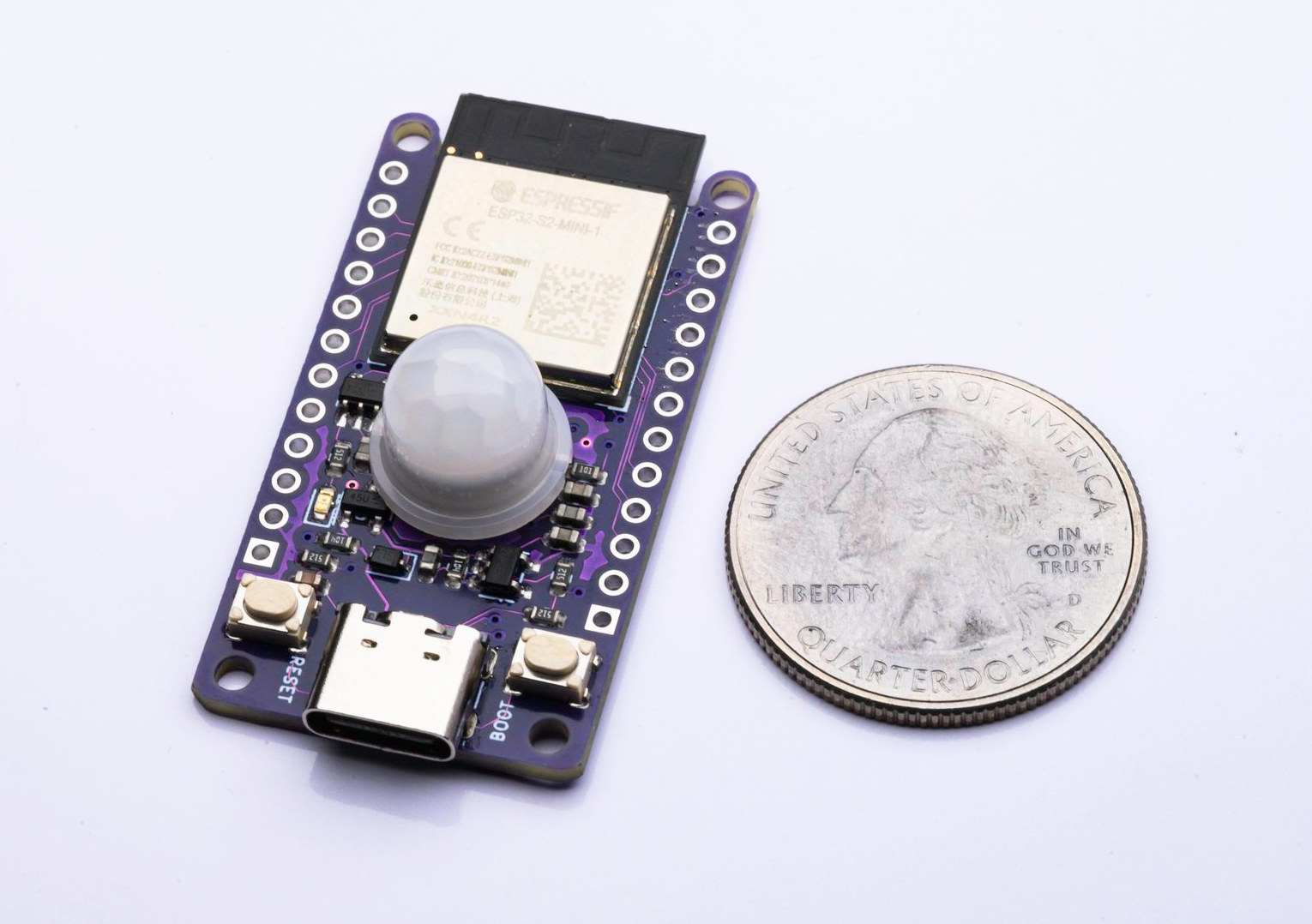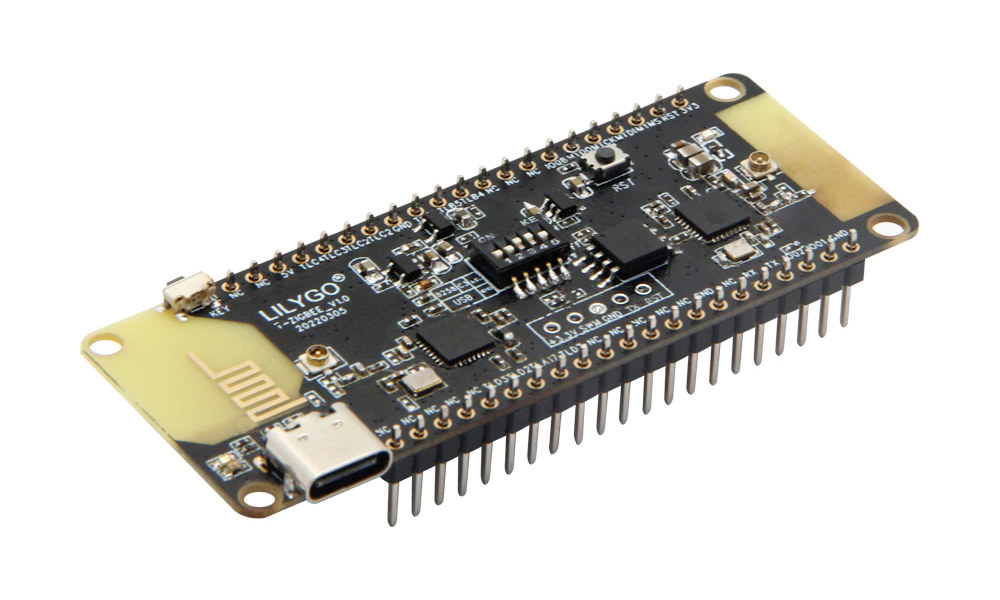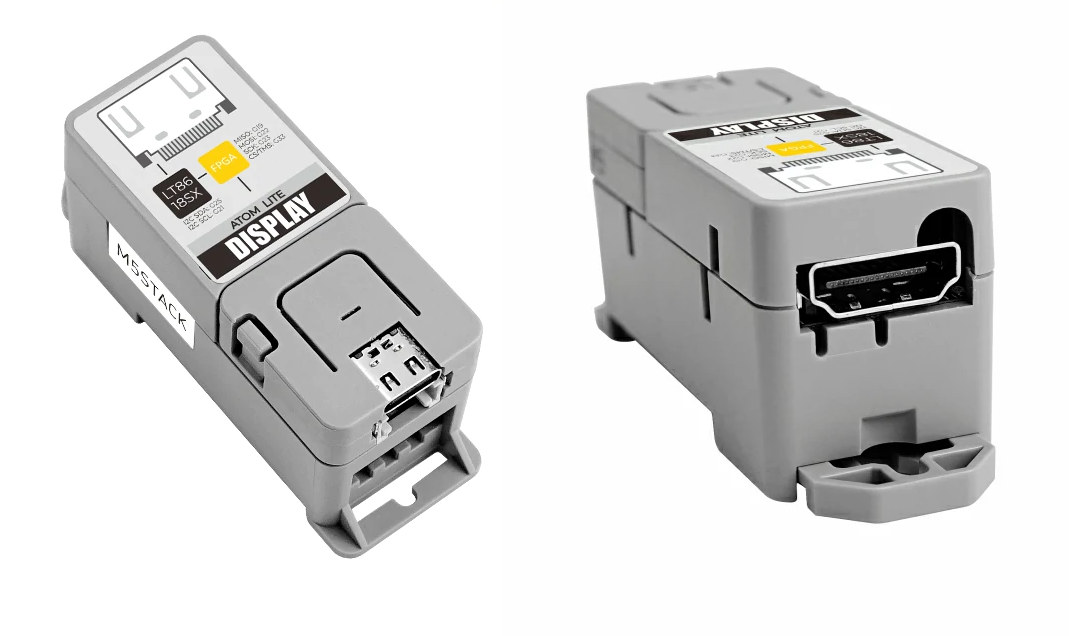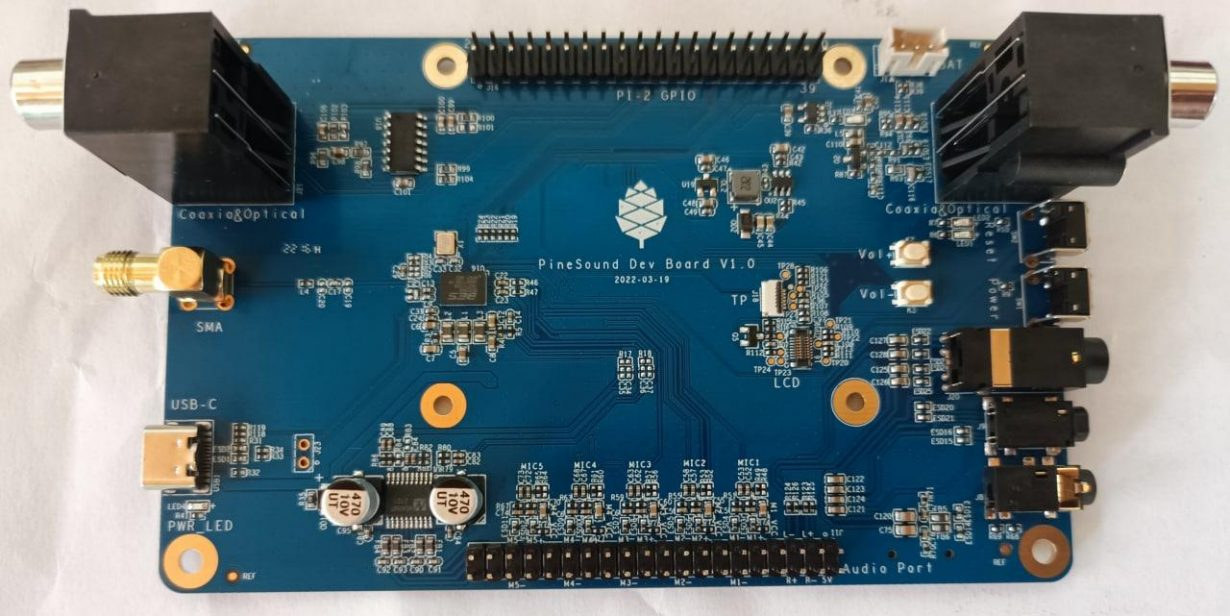HC32L110 Arm Cortex-M0+ MCU is found in a minuscule 1.59 x 1.436 mm CSP16 package that should make it the world’s smallest Arm MCU. LilyGO T-HC32 is one of the first boards with the HC32L110B6 microcontroller, and it is now available for $8.98 on Aliexpress including shipping. The board offers really basic features with two buttons, a WS2812 RGB LED, and two-row of ten pins each for GPIOs and power signals, plus a 4-pin header for SWD programming. There’s nothing really special about the board or its price, except for the MCU’s size that’s barely discernable from a discrete component, and much smaller than the 7x7mm ESP32-PICO-D4 system-in-package shown in the photo below for comparison. LilyGO T-HC32 board specifications: MCU – HDSC HC32L110B6 Arm Cortex-M0+ @ up to 32 MHz with up to 4KB RAM, up to 32KB flash memory Expansion – 2x 10-pin header with GPIO, UART, I2C, […]
“ESP32-C3-0.42LCD” is a tiny WiFi & BLE IoT board with 0.42-inch display, Qwiic connector
01Space “ESP32-C3-0.42LCD” is a small (23.5 x 18 mm) board equipped with ESP32-C3 RISC-V WiFi and Bluetooth microcontroller, a 0.42-inch display, and a Qwicc I2C connector to easily add modules such as sensors. The first time I saw it, the form factor immediately reminded me of the nRF52840-based XIAO BLE Sense board I just used to test Edge Impulse machine learning framework. Both boards should have similar use cases, but XIAO BLE Sense includes a 6-axis IMU sensor, and I had to connect an OLED display, while the ESP32-C3 board already integrates a display, and I would have had to connect an external Qwicc module with an accelerometer. ESP32-C3-0.42LCD specifications: SoC – ESP32-C3FH4 SoC with RISC-V core @ 160 MHz, 4MB flash, 2.4GHz Wi-Fi, and Bluetooth 5 LE with Long-Range support Ceramic antenna Display – 0.42-inch LCD USB – 1x USB Type-C port for power and programming Expansion Qwiic I2C connector […]
iCESugar-nano is a $19 iCE40LP1k FPGA board with 3x PMOD connectors
Muse Lab’s iCESugar-nano is a tiny FPGA board based on Lattice Semi iCE40LP1K-CM36 programmable via its USB-C port through on-board iCELink debugger, and exposing I/Os for three standard PMOD connectors. The board is fully supported by Yosys open-source toolchain ( Yosys+ nextpnr + IceStorm), and the onboard debugger supports drag-and-drop programming so that you can just drag the FPGA bitstream into the virtual disk to program it through a USB Type-C cable. iCESugar-nano specifications: FPGA – Lattice Semi iCE40LP1k FPGA with 1280 LUT/8KB SRAM/PLL Storage – 2MB SPI flash (W25Q16) USB – 1x USB Type-C port for power and programming Expansion – 14x usable IOs with 1x 12-pin PMOD connectors and 2x 6-pin PMOD connectors Debugging – On-board iCELink debugger based on Arm Mbed DAPLink Misc – Adjustable clock (8/12/36/72MHz), LED Power Supply – 5V via USB-C port Dimensions – 3.9 x 1.8 cm Documentation, schematic PDF, links to tools, […]
ZUBoard 1CG – A low-cost AMD Xilinx Zynq UltraScale+ ZU1CG MPSoC FPGA development board
Avnet ZUBoard 1CG is a development board featuring the new entry-level AMD Xilinx Zynq UltraScale+ ZU1CG dual-core Cortex-A53 MPSoC with 81K FPGA system logic cells, equipped with 1GB LPDDR4 RAM, as well as SYZYGY connectors and mikroBus expansion for Click boards. Priced at $159, the board may offer a good opportunity to get started with Zynq UltraScale+ MPSoC, as it’s quite cheaper than boards based on ZU3 devices such as Ultra96-V2 or MYD-CZU3EG. Avnet says the board is suitable for artificial intelligence, machine learning, embedded vision, embedded processing, and robotics applications. ZUBoard 1CG specifications: SoC – AMD/Xilinx ZU+ MPSoC ZU1CG with Dual Cortex-A53 APU @ up to 1.3 GHz and dual Cortex-R5 RPU @ up to 533 MHz 256KB On-chip Memory 81,900 FPGA Logic Cells System Memory – 1GB LPDDR4 with on-chip ECC Storage – 256Mbit QSPI flash, microSD card, both bootable Networking – 10/100/1000M Gigabit Ethernet RJ45 port USB […]
Bee Motion ESP32-S2 PIR motion sensor offers GPIOs, over a year of battery life
Smart Bee Designs’ Bee Motion is an ESP32-S2 board with a PIR motion sensor, some GPIOs for expansion, and promising over a year of battery life under the right circumstances. If the name “Bee Motion” rings a bell, it’s because we covered the Bee Motion Mini board last month with an ESP32-C3 processor and a PIR sensor, but no USB port for programming and no expansion ability. It was just designed to be used as a battery-powered wireless PIR motion sensor. The Bee Motion expands the use cases of the solution, although it only features WiFi connectivity, and loses Bluetooth LE. Bee Motion specifications: Wireless module – Espressif ESP32-S2-MINI-1 module with Espressif ESP32-S2FH4 single-core 32-bit LX7 microcontroller @ up to 240 MHz, RISC-V ultra-low-power co-processor, 320 kB SRAM, 128kB ROM, 2.4 GHz WiFi 4 connectivity, 4MB flash, PCB antenna PIR sensor – Passive infrared motion sensor with dome lens, 5-meter […]
$10 T-Zigbee board combines ESP32-C3 and TLSR8258 for Zigbee 3.0, WIFi and BLE connectivity
LilyGO T-Zigbee board combines ESP32-C3 WiFi and BLE wireless microcontroller and Telink TLSR8258 multi-protocol wireless SoC compatible with BLE 5 Mesh, Zigbee, RF4CE, Thread, 6LoWPAN, HomeKit, ANT, and 2.4GHz proprietary standards. As I understand it, T-Zigbee is designed to act as a Zigbee to WiFi bridge, and is compatible with Zigbee2MQTT and Home Assistant, allowing easy integration into your home automation setup. Based on the hardware, I’d assume it may be usable as a BLE to MQTT gateway as well, in a fashion similar to GL.inet GL-S10 gateway, for people willing to work on the software/firmware. T-Zigbee specifications: Wireless MCUs Espressif Systems ESP32-C3 RISC-V processor with WiFi 4 and Bluetooth 5.0 LE connectivity Telink Semiconductors TLSR8258 (PDF product brief) Arm Cortex-M0 multiprotocol microcontroller @ 48 MHz with BLE 5 Mesh, Zigbee, RF4CE, Thread, 6LoWPAN, HomeKit, ANT, and 2.4GHz proprietary connectivity Antennas – 2x PCB antennas, 2x u.FL antenna connectors USB […]
M5Stack ATOM Display Lite adds HDMI output to ESP32 module
M5Stack ATOM Display Lite is a kit based on GOWIN Gowin GW1NR-9C FPGA and LT8618SX RGB to HDMI chip designed to add HDMI output up to 720p to the company’s ESP32-based M5Stack ATOM Lite module. The ATOM Lite sees the ATOM Display Lite kit as an SPI display, but the solution outputs the data to an HDMI monitor or TV with up to 1280×720 resolution and can be used for information display, menu board, and more. ATOM Display Lite specifications: Wireless IoT modules – M5Stack ATOM Lite ESP32-PICO-D4 based module with 240MHz dual-core CPU, 520KB SRAM, 4MB flash, Wi-Fi 4 and Bluetooth connectivity FPGA – Gowin GW1NR-9C (PDF datasheet) FPGA with 8,640 LUTs used to simulate SPI TFT-LCD data output, HDMI bridge – Lontium Semi LT8618SX RGB to HDMI chip with 24-bit color depth up to 1280×720 output @ 60 fps (optimized frame rate up to 12 ~ 16FPS) Misc- […]
PineSound is a development board for earbuds and digital audio players
You may have read Pine64’s April’s Fools spoof about the PineBuds and PinePod earlier this month. It turns out those will be real, and the Pine64 PineSound development board will be used to bring the PineBuds earbuds and PinePod digital audio player to market. The PineSound board features Bestechnic BES2300 Bluetooth 5.0 audio chip, two coaxial & optical input and output, a 3.5mm headphone jack, 4.4mm and 2.5mm balanced jacks, an SMA connector, a USB Type-C connector, plus interfaces for a touchscreen display. PineSound preliminary specifications: WiSoC – Bestechnic BES2300-YP dual-core Arm Cortex-M4F @ up to 300 MHz with HW DSP instruction, 992KB SRAM, 4MB flash, Bluetooth 5.0 dual mode. Supports hybrid ANC (active noise cancellation) and TWS (true wireless stereo). Note: the datasheet has been made available in the comments section. Display – LCD (should be SPI) and touch panel connectors Audio Coaxial & optical input (left) Coaxial & […]


